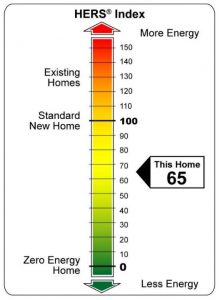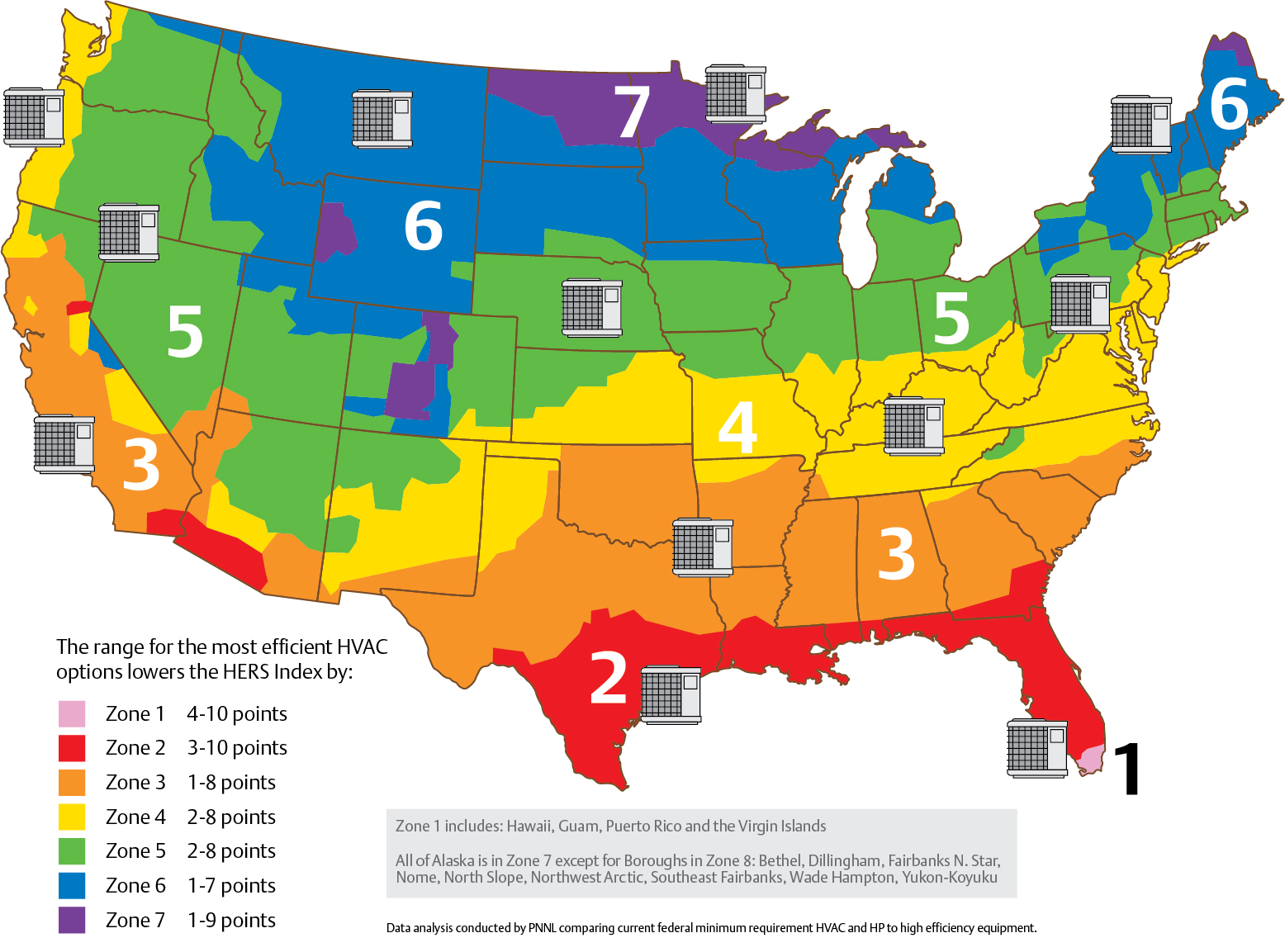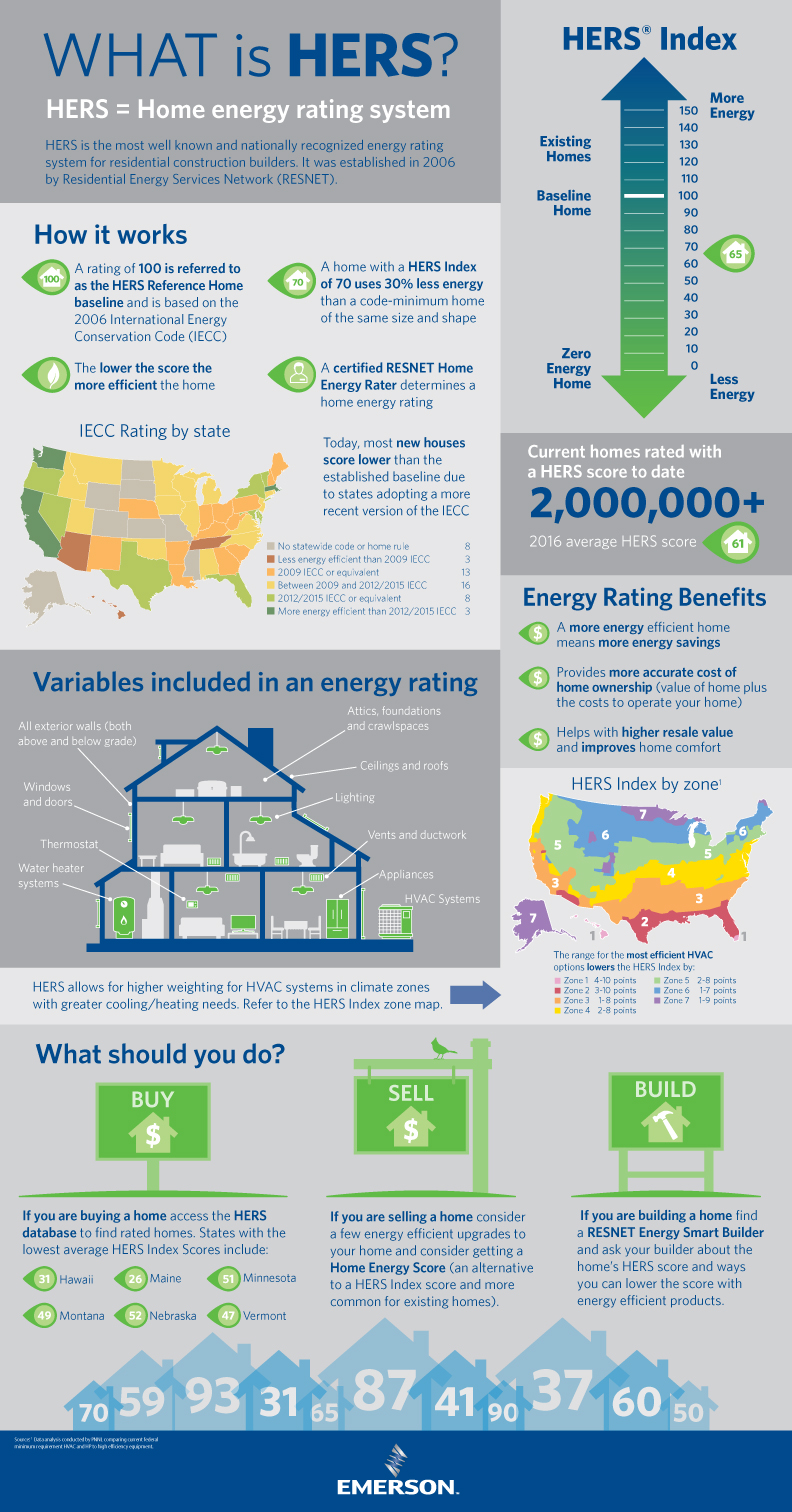The Home Energy Rating System – more commonly referred to as the HERS Index – has become the most well-known energy rating system for residential construction builders in the U.S. You can think of it as a “miles per gallon” rating for homes. Let’s look at what the HERS Index is and why builders are adopting it.
What is the HERS Index?
 Developed by the Residential Energy Services Network (RESNET), the HERS Index is a nationally recognized system to rate a home’s energy efficiency, with lower scores indicating a higher efficiency home. A HERS Index of 100 represents the energy efficiency of a standard home built according to the 2006 International Energy Conservation Code (IECC). A HERS Index of zero represents a net-zero energy home. Each value on this scale represents a one percent change in the total energy use of the rated design.
Developed by the Residential Energy Services Network (RESNET), the HERS Index is a nationally recognized system to rate a home’s energy efficiency, with lower scores indicating a higher efficiency home. A HERS Index of 100 represents the energy efficiency of a standard home built according to the 2006 International Energy Conservation Code (IECC). A HERS Index of zero represents a net-zero energy home. Each value on this scale represents a one percent change in the total energy use of the rated design.
The rating is based on inputs from testing conducted inside the home as well as the efficiency of heating and cooling systems, supply and return air ducting, building envelope air infiltration, and building envelope insulation quality. This tool helps homeowners understand how energy efficient a home is when making a purchase.
What’s Driving Adoption?
The 2015 IECC introduced an Energy Rating Index (ERI) compliance path using the HERS Index. Builders like this approach because it allows them to select the most cost-effective energy efficiency measures for each home. According to RESNET, twelve states have adopted the ERI compliance path into energy codes for new residential construction with an average HERS score requirement of 53.
- Alabama
- Florida
- Illinois
- Maryland
- Massachusetts
- Michigan
- Nevada
- New Jersey
- New York
- Texas
- Utah
- Vermont

Utilities have also started offering incentives utilizing the ERI “whole-house” performance pathway to increase energy efficiency in new residential construction. This is a more comprehensive approach to verify that all materials, systems and appliances are working together to maximize a home’s energy efficiency.

Click here to download the HERS infographic.

